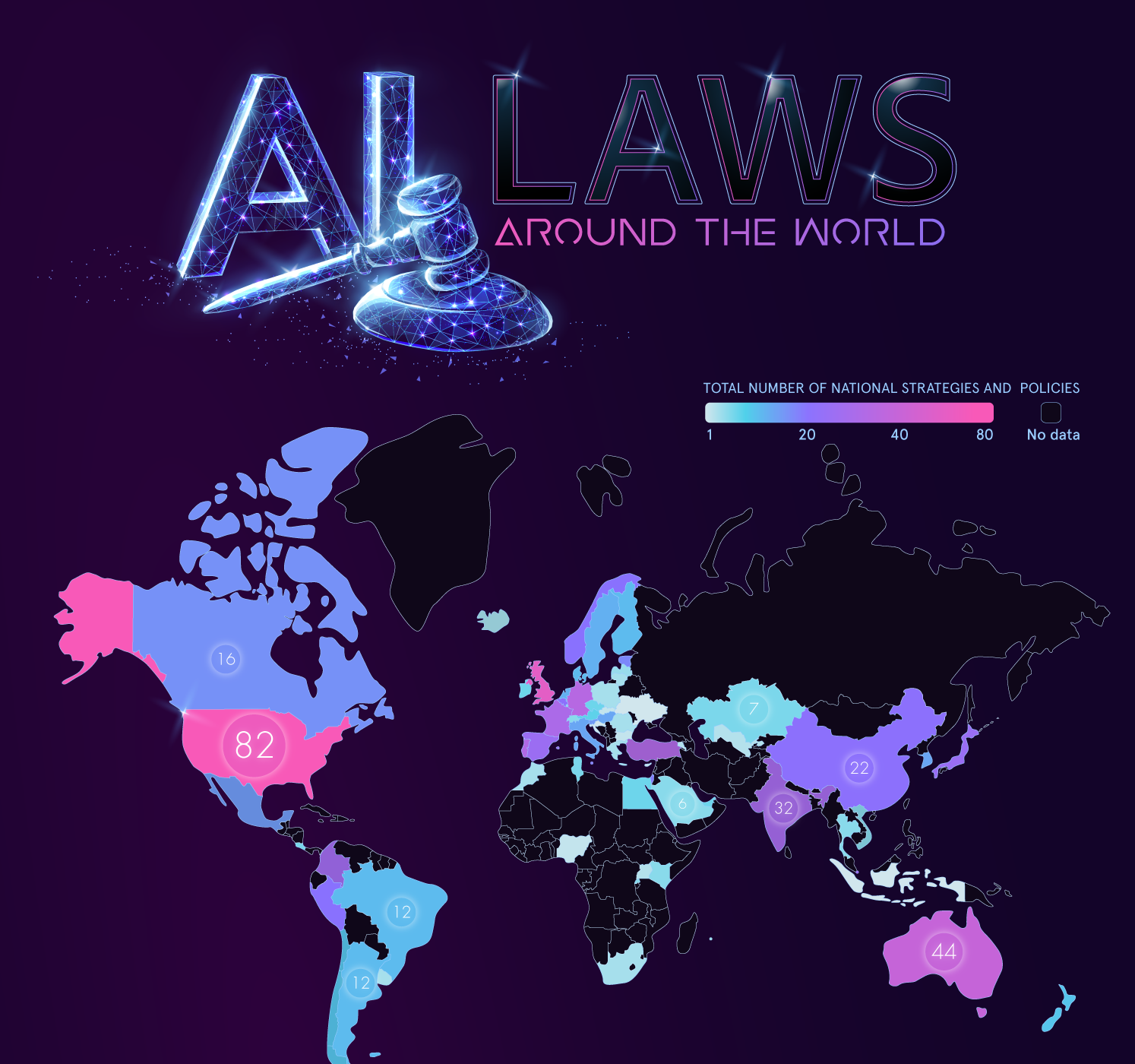At a Glance
This blog walks you through how to construct a robust AI governance framework that supports Responsible AI in practice. You’ll learn:
- Key domains every AI-driven organization must support
- A structured model (workshops, committees, policies, oversight)
- Regulatory alignment (EU AI Act, standards) and real-world references
- Practical steps you can implement now
- How Adeptiv AI’s governance platform can simplify compliance
Understanding the Foundations
As AI technologies become integral to strategy, operations, and products, organizations can no longer treat governance as an afterthought. A well-formed AI governance framework anchors Responsible AI ideals into processes, compliance structures, and technical safeguards.
Notably, vendors like Securiti emphasize that governance is more than risk assessment — it’s a “holistic understanding of AI utilization, system mapping, continuous monitoring, and granular controls.”
And OneTrust’s white paper on developing AI governance programs underlines that teams must embed data governance, compliance, risk mitigation, and accountability from day one.
Three Pillars That Support AI-Driven Organizations
Before diving into the build, your organization should rest on three essential domains:
- AI Strategy: Align AI initiatives with business goals, risk appetite, and market context.
- AI Organization: Cultivate AI literacy, define roles, and structure cross-functional governance.
- AI Operational Lifecycle: Ensure reproducibility, robustness, transparency, from development through monitoring.
These pillars provide stability so your governance framework isn’t brittle under pressure.
A Model for AI Governance Framework
Below is a refined step-by-step model—each stage enriched with insights from governance leaders and real-world practices.
1. Define the AI Governance Objectives
Your framework must be purpose-driven. Some typical objectives:
- Risk mitigation: limit bias, unpredictable outcomes, unfairness
- Ethical compliance: uphold privacy, fairness, transparency
- Accountability: clear traceability, auditable decisions
- Policy enforcement: secure data, consistent governance across projects
Suggested approach: Organize a mission alignment workshop with stakeholders:
- Review mission, core values, and how AI should advance them
- Identify ethical priorities: which values must your AI systems embody?
- Draft governance objectives with alignment to organizational goals
- Discuss potential generative AI use cases to test alignment
This way, objectives aren’t abstract—they’re grounded in mission and operations.
2. Establish Ethical Principles
These principles act as your guardrails. Common ones (widely adopted) include:
- Fairness
- Transparency / Explainability
- Accountability
- Privacy & Security
- Safety / Robustness
- Inclusivity
- Human oversight / intervention
- Sustainability (trust and long-term public value)
When designing, use real stakeholder input, and avoid generic statements. Each principle should come with examples and boundaries.
3. Define Governance Structure & Roles
Your framework needs structure—and clarity:
- Ethics Committee / AI Board: Reviews use cases, ensures alignment.
- AI Steering or Governance Team: Manages cross-functional coordination.
- Model Owners / AI Trustees: Responsible for individual models, risk mitigation.
- Use a RACI matrix to specify who’s Responsible, Accountable, Consulted, and Informed.
Also, embed training programs to build literacy, and engage external stakeholders (advisors, community voices) to validate priorities.
4. Policies, Procedures & Controls
Translate high-level principles into actionable rules:
- Data handling policies (collection, labeling, sanitization, retention)
- Risk mitigation policies (bias testing, adversarial testing)
- Model validation & performance audits
- Security, access control, encryption
- Compliance, vendor evaluation, procurement policies
- Versioning, rollback, fallback mechanisms
OneTrust’s governance solution emphasizes that inventorying, assessing, and monitoring AI risk is critical to enforce policies at scale.
5. Monitoring, Logging & Auditability
Ongoing oversight is non-negotiable:
- Deploy continuous monitoring so model drift or bias regressions are flagged
- Log every decision: inputs, model version, output, confidence, reasoning
- Create dashboards for stakeholders (compliance, engineering, leadership)
- Use external audits for independent verification
Securiti’s whitepapers stress discovery, risk ratings, and mapping of AI tools as part of “automated governance controls.”
6. Incident Response & Remediation
Mistakes happen—your readiness matters:
- Define trigger thresholds (bias, performance, safety issues)
- Rollback protocols and emergency human overrides
- Root cause and retrospective analysis
- Notifications (users, regulators, internal teams)
- Continuous improvement (lessons learned, updates to controls)
Alignment with Regulation & Standards
A framework is strongest when mapped to standards:
- EU AI Act: risk-based obligations on high-risk AI systems
- ISO/IEC 42001: recently published standard for AI management systems
- NIST AI RMF: a U.S. risk framework that bridges trust, security, fairness
Match each principle, control, and process in your framework to relevant clauses in these standards. This makes audits more straightforward and compliance defensible.
Enriching with External Reference Models
- The Singapore Model AI Governance Framework (GenAI version) outlines nine governance dimensions as a benchmark for regional governance.
- The new paper “A five-layer framework for AI governance: integrating regulation, standards, and certification” offers a layered approach from high-level regulation down to certification controls.
- The “Blueprints of Trust” paper introduces Hazard-Aware System Cards (HASC), which can enrich your transparency models.
Leveraging these models can help your framework adapt as governance theory evolves.
Studio Example Integration (Hypothetical)
Imagine a startup building AI for urban planning:
- They start a mission workshop: municipal equity + sustainability
- Ethical priority: no zonal bias, transparency to citizens
- Governance structure: Ethics Board with engineers, urban planners, legal
- They design policies: all training data must be balanced geography-wise
- They build dashboards for drift and fairness metrics
- Incident plan: auto rollback if equity metrics degrade beyond thresholds
This is how theory meets practice.
Conclusion
Building an AI Governance Framework is no longer an optional compliance task—it’s a strategic necessity for every organization leveraging AI at scale. As the EU AI Act, ISO 42001, and NIST AI RMF shape the global regulatory landscape, enterprises must proactively operationalize Responsible AI principles to stay competitive and compliant.
A resilient framework doesn’t just reduce risk; it fosters trust, innovation, and accountability—turning AI into a sustainable advantage rather than a liability.
With Adeptiv AI’s Governance Platform, organizations can automate governance tasks, map risk controls to regulations, and monitor compliance in real time—simplifying Responsible AI implementation across every stage of the AI lifecycle.
Build once, govern forever — with Adeptiv AI.
FAQs
Q1: What’s the difference between Responsible AI and AI governance?
Responsible AI is about ethical principles and practices (fairness, transparency, privacy), while AI governance is the structure that operationalizes them across your org.
Q2: How should a small company start with governance?
Start simple: build an AI inventory, define 2–3 guiding principles, create key controls for major systems, and plan to expand.
Q3: Can governance slow innovation?
If done retroactively, yes. But embedding governance early accelerates adoption by reducing rework, building trust, and easing compliance.
Q4: How often should a framework be reviewed?
At least annually, or whenever major regulations, model changes, or technology shifts (e.g. new ML architecture) occur.
Q5: Do we need external audits?
Yes. External audits help validate your internal controls, assure stakeholders, and offer defense in case of compliance or legal scrutiny.



